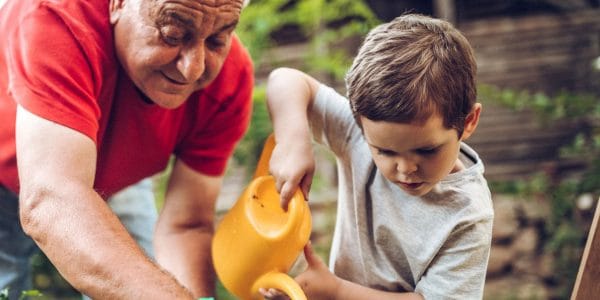
26/04/21
3 min read
Inheritances have been growing as a share of national income in the UK since the 1970s. That trend looks set to continue: older generations hold more wealth than their predecessors and younger generations have incomes no higher than the generations born just before them. As a result, inheritances will be an increasingly important part of lifetime income and wealth.
New IFS research, released today and funded by the Nuffield foundation, makes projections of the inheritances to be received by the 1960s, 1970s and 1980s-born generations in the UK.
Key findings
This research finds that inheritances are set to grow dramatically compared to other income:
- For those born in the 1980s, average inheritances compared to lifetime income are projected to be almost twice as large as for those born in the 1960s. We project that, on average, inheritances will be worth 9% of household lifetime (non-inheritance) income for those born in the 1960s, rising to 16% for those born in the 1980s.
This would mark a profound social change, meaning that people’s incomes and living standards are increasingly determined by what they receive from their parents rather than what they earn themselves:
- Inheritances are set to increase inequalities in lifetime income between those with richer and poorer parents. For those born in the 1960s, inheritances are projected to increase lifetime incomes by 2%, on average, for those with parents in the bottom fifth of the wealth distribution and by 17% for those with parents in the top fifth.
- The effect of inheritances on inequalities by parental background is projected to be larger for younger generations. For those born in the 1980s, inheritances are projected to increase lifetime incomes by 5%, on average, for those with parents in the bottom fifth of the wealth distribution and by 29% for those with parents in the top fifth.
- Consequently, inheritances are likely to be increasingly important in driving differences in living standards between those from different parental backgrounds. For those born in the 1960s, inheritances are projected to account for around a quarter of the inequality in living standards between those from different parental backgrounds. But for those born in the 1980s, this is projected to rise to a third.
This means the differences between older and younger generations that we see today are set to translate into reduced social mobility within younger generations in future.
Inheritances look set to make it increasingly hard for those with poor parents to move up the income distribution, as their smaller inheritances mean they have more ground to make up:
- For the 1960s-born whose parents are in the poorest fifth by wealth, we project that inheritances will increase the proportion who end up in the poorest fifth of lifetime incomes themselves from 38% to 41%.
- However, amongst those born in the 1980s, the equivalent rise is from 40% to 48%, meaning inheritances have an impact which is around twice as big.
Other findings
A growing share of people expect to inherit and plan to use an inheritance to fund their retirement:
- The percentage of individuals expecting to receive an inheritance rose from 72% of those born in the 1960s to 81% of those born in the 1980s.
- When they were in their late 30s, 24% of those born in the 1960s expected to use a future inheritance as a source of retirement funding, rising to 27% of those born in the 1970s.
While inheritances are likely to have their biggest effect on living standards later in life, once they are received, the anticipation of future inheritances may have consequences for outcomes today:
- An economic model of savings decisions projects that those born in the 1980s will on average hold 9%, or around £16,000, less wealth at the age of 45 because they anticipate a future inheritance.
As those with higher incomes are more likely to be able or willing to reduce the amount that they save in anticipation of inheriting, they likely see a larger effect on their living standards today:
- Our modelling finds that for 1980s-born, the bottom fifth of households by lifetime income consume 11% of their inheritance in advance of receiving it whereas the top fifth by lifetime income spend 33% in advance.
This means that those who have high incomes may be in a position to benefit more from a given inheritance than does a lower income household as they are able to spread the extra spending from inheritances over their lifetimes, rather than concentrating it towards the end.
David Sturrock, a Senior Research Economist at IFS and an author of the report said:
“The increasing levels of wealth held by older generations and the lack of income growth for younger generations are together driving an inter-generational economic divide. But these trends also mean that inheritances are set to become more important in future, widening the gap between those with rich parents and those with poor parents. The growing importance of inherited wealth will be a profound societal shift, and one with worrying consequences for social mobility.
As inheritances become larger, any policies that redistribute inheritances will have bigger impacts on inequality and social mobility, and this should increase the pressure to rationalise our system of inheritance taxation. More broadly, our findings underline the need to kickstart income growth for younger generations, not just to improve living standards but also to limit the importance of parental wealth and therefore drive social mobility too.”
The pandemic has highlighted and exacerbated the social and economic inequalities within our society. This research shines a light on ways in which those inequalities are set to increase even further with the growing importance of inheritances in lifetime incomes. If we are to improve social mobility, policies need to focus on improving living standards for all and on tackling discrimination and disadvantage.”Alex Beer, Welfare Programme Head at the Nuffield Foundation
Download report























































